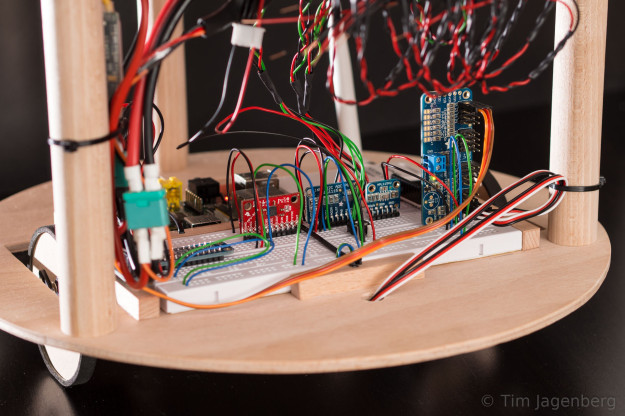Being curious about the underlying structure of relations between Hackaday authors, articles, and the referenced makers, I wrote a little Java program extracting this information from publicly available data. Using jsoup and gexf4j this was a rather quick task. A simple regular expression
\[([\w\s]+)\
extracts the usual “[Tim] did this and that …” references from the Hackaday blog.
After parsing the relationships
Author [wrote] Article Author [mentions] Maker Article [references] Maker Maker [mentionedWith] Maker
and saving them as an GEXF graph, the data is passed to Gephi. Gephi is a really intuitive and versatile graph visualisation tool with various options to map properties to visual appearances. It also includes a range of automated layout algorithms.
The result of playing around with the data from the last 99 blog-history pages (~from November 2014) and the many visual options of Gephi are two rather beautiful and also insightful graphs:
(green – authors, red – articles, blue – makers)
The first graph scales the nodes according to their number of outgoing relations which emphasizes the authors. The second graph scales by the incoming relations and emphasizes the makers. On the outer fringes it becomes obvious that each author has his distinct cloud of referenced blogs while the centre of the graph highlights a cluster of makers referenced by multiple authors. Another prominent feature are many smaller clusters of makers mentioned together in one or more articles. With a bit of googling, it turns out that some of these graph-relations map very nicely to personal relationships. For example two maker-nodes mentioned together very often are actually brothers in the real-world. Others turn out to be close friends.
Although all of this is public information, I left out the labels identifying authors, articles, or makers for their privacy. Especially in the context of the current debate about safety, security, and privacy, this highlights how much insight can be gained even from simple meta-data relationships.





